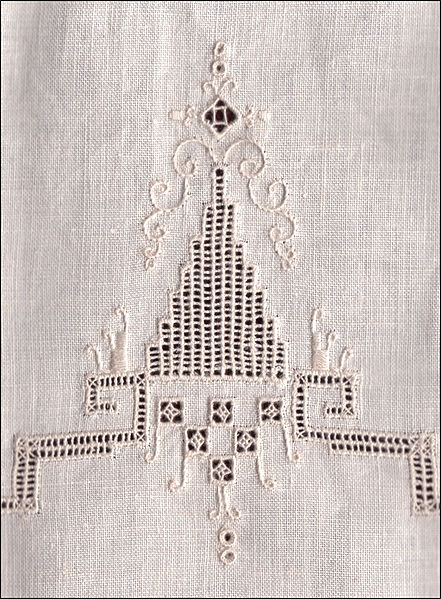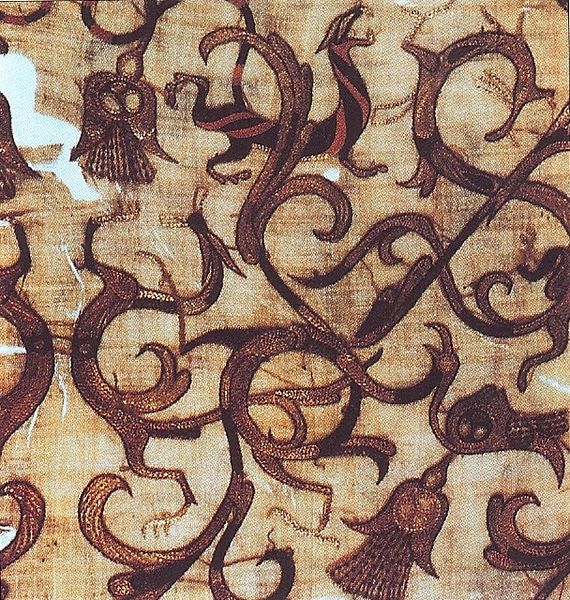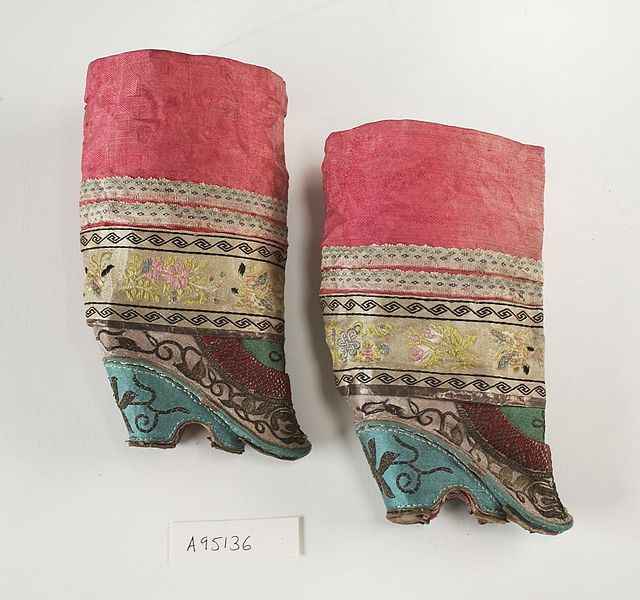Whitework embroidery is any embroidery technique in which the stitch and the foundation fabric are of same color. Styles of whitework embroidery include most drawn thread work, broderie anglaise, Hardanger embroidery, Hedebo embroidery, Mountmellick embroidery, reticella and Schwalm. Whitework embroidery is one of the techniques employed in heirloom sewing for blouses, christening gowns, baby bonnets, and other small articles.
Linen towel with drawn threadwork accented with embroidery in stem and satin stitch.
Dresden work on white linen; Engageantes
Richelieu cutwork embroidery, a form of whitework
Women's collar, Linen plain weave, drawn threadwork, cotton embroidery. Europe or North America, c. early 19th century. Los Angeles County Museum of Art: 60.41.82.
Embroidery is the art of decorating fabric or other materials using a needle to stitch thread or yarn. Embroidery may also incorporate other materials such as pearls, beads, quills, and sequins. In modern days, embroidery is usually seen on hats, clothing, blankets, and handbags. Embroidery is available in a wide variety of thread or yarn colour. It is often used to personalize gifts or clothing items.
Embroidery sampler by Alice Maywood, 1826
Laid threads, a surface technique in wool on linen. The Bayeux Tapestry, 11th century
Detail of embroidered silk gauze ritual garment. Rows of even, round chain stitch used for outline and color. 4th century BC, Zhou tomb at Mashan, Hubei, China.
A pair of Chinese shoes for bound 'lily' feet








